I hope that includes translated records from Mogilev Gubernia of what is now Belarus, of the 1880s, my primary brick wall so far in one portion of my family.
MyHeritage Updates Collection of Sweden Household Examination Books, 1820–1947
- By Talya
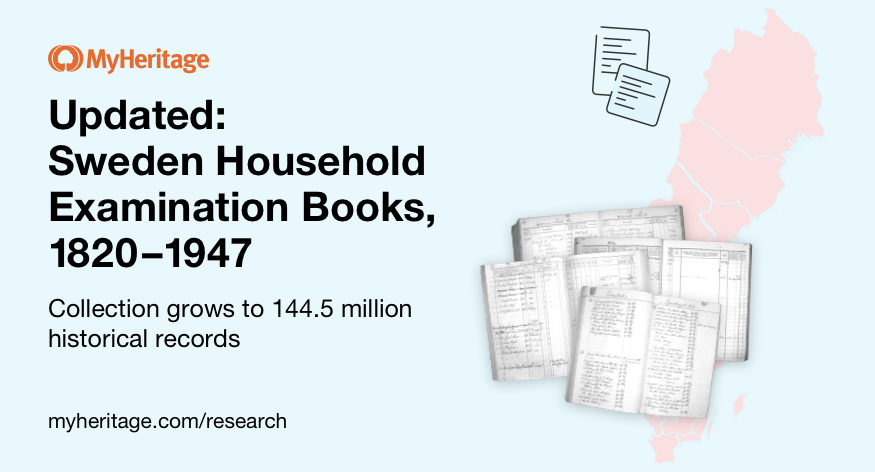

Recently we updated one of our most popular collections, the Sweden Household Examination Books by adding 19.35 million historical records from the years 1820 to 1839. The collection now contains 144.5 million records spanning the years 1820 to 1947. The Household Examination Books are the primary source for researching the lives of individuals and families throughout the parishes of Sweden, from the late 1600’s until modern times. Because the books were updated every year, families can be traced year to year, and often from location to location throughout the country. The MyHeritage version of the collection offers a robust index with the opportunity to flip between different records of the same person from different stages of life. The collection is invaluable as it can provide insight into the makeup of families within Sweden, from birth to death or emigration.
Search Sweden Household Examination Books, 1820–1947
Each book or series of books, which was created and kept by the Swedish Lutheran Church, represents a 3–10 year period of time within a parish. Every year until 1894, the parish priest would visit each home and test each individual’s knowledge of the catechism. They would also collect information about birth dates, marriages, deaths, where people had moved to or from, and so on. Each year the priest would come back and update the information of the previous year, noting changes within the population of the home.
MyHeritage has produced an every-name index to nearly 8 million images provided by our Swedish partner ArkivDigital. Until 1894, the parish priest would visit each farm or home within his parish in order to grade and document each individual’s understanding of the catechism. After 1894, the books were replaced by Församlingsbok: records of the Church of Sweden which were used to officially enumerate the population from year to year. The examinations in this new format were less focused on doctrinal knowledge and more focused on enumerating the Swedish population.
Examples
August Strindberg
A record of prolific author August Strindberg can be found in this collection. August was a playwright and author of non-fiction books, but is best known for his works of modern fiction. His record contains information on his birth, residence, marriage, and children.
![Sweden Household Examination Record of August Strindberg [Credit: MyHeritage Sweden Household Examination Books, 1820-1947]](https://blog.myheritage.com/wp-content/uploads/image1-12.jpg)
Sweden Household Examination Record of August Strindberg [Credit: MyHeritage Sweden Household Examination Books, 1820-1947]
Selma Lagerlöf
The collection also contains a record of Swedish author and teacher Selma Lagerlöf. Selma was the first female writer to win the Nobel Prize for Literature, and to become a member of the Swedish Academy. Her first novel, Gösta Berling’s Saga, was published when she was 33.
The record contains information on her birth, residence, her father and mother’s names and sibling’s names.
![Sweden Household Examination Record of Selma Lagerlöf [Credit: MyHeritage Sweden Household Examination Books, 1820-1947]](https://blog.myheritage.com/wp-content/uploads/image3-9.jpg)
Sweden Household Examination Record of Selma Lagerlöf [Credit: MyHeritage Sweden Household Examination Books, 1820-1947]
Lars Magnus Ericsson
The record of Swedish inventor Lars Magnus Ericsson appears in this collection. Lars was the founder of the Ericsson telephone corporation.
The record contains details on his birth, residence in Stockholm, his wife, and his marriage date as well as the names of his children.
![Sweden Household Examination Record of Lars Ericsson [Credit: MyHeritage Sweden Household Examination Books, 1820-1947]](https://blog.myheritage.com/wp-content/uploads/image4-8.jpg)
Sweden Household Examination Record of Lars Ericsson [Credit: MyHeritage Sweden Household Examination Books, 1820-1947]
Summary
Thanks to its rich index, the MyHeritage Sweden Household Examination Books, 1820–1947 is a vital collection for anyone researching their Swedish heritage.
Searching the Sweden Household Examination Books, 1820–1947 is free. To view these records or to save records to your family tree, you’ll need a Data or Complete subscription. If you have a family tree on MyHeritage, our Record Matching technology will notify you automatically if records from these collections match your relatives.
For more information about researching your Swedish ancestors and for strategies for breaking through brick walls in your Sweden-based research, you may find the following blog post useful: What’s In a Name? A Guide to Swedish Surnames and Genealogy Research.
Enjoy the collection!

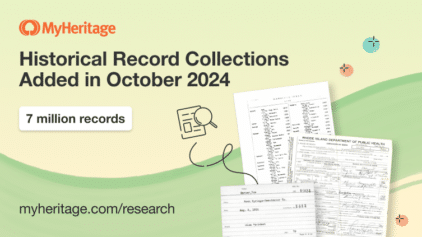

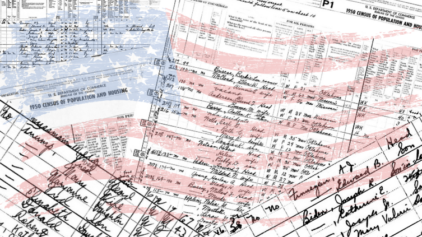

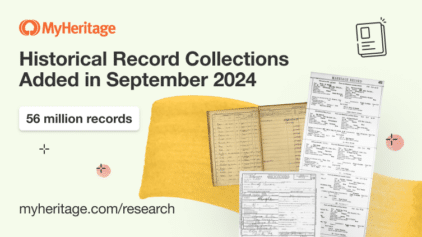
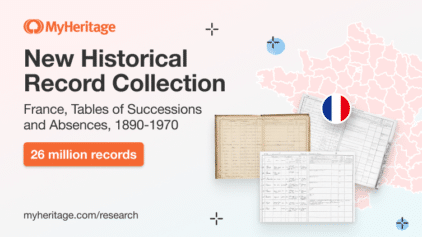
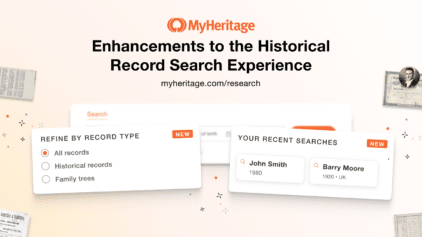
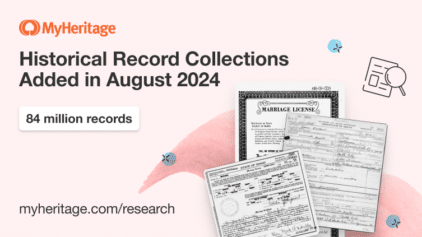
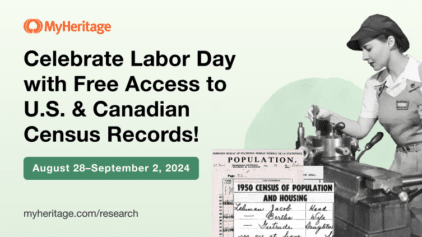
oscar barrera
April 7, 2021
interesting!!